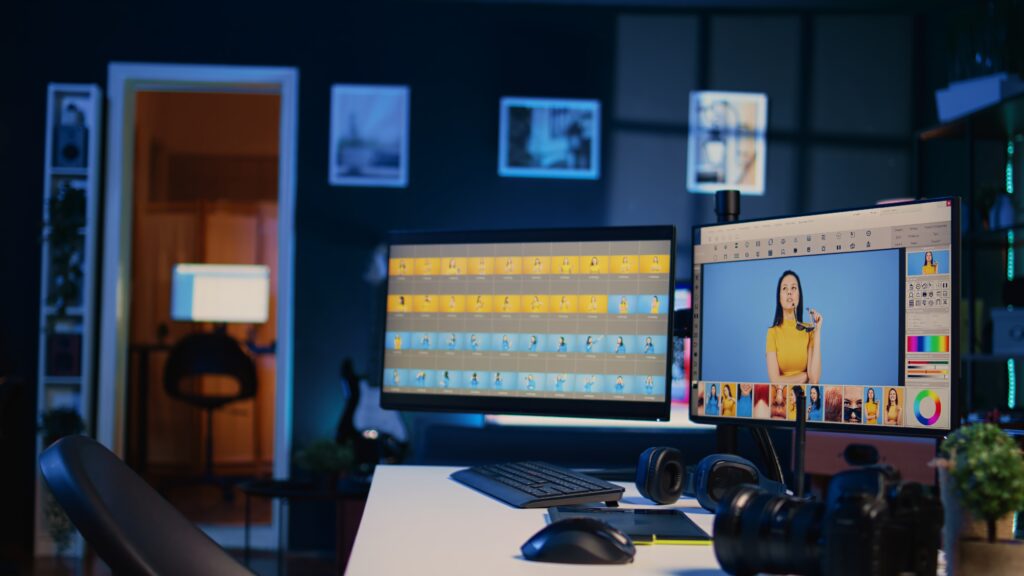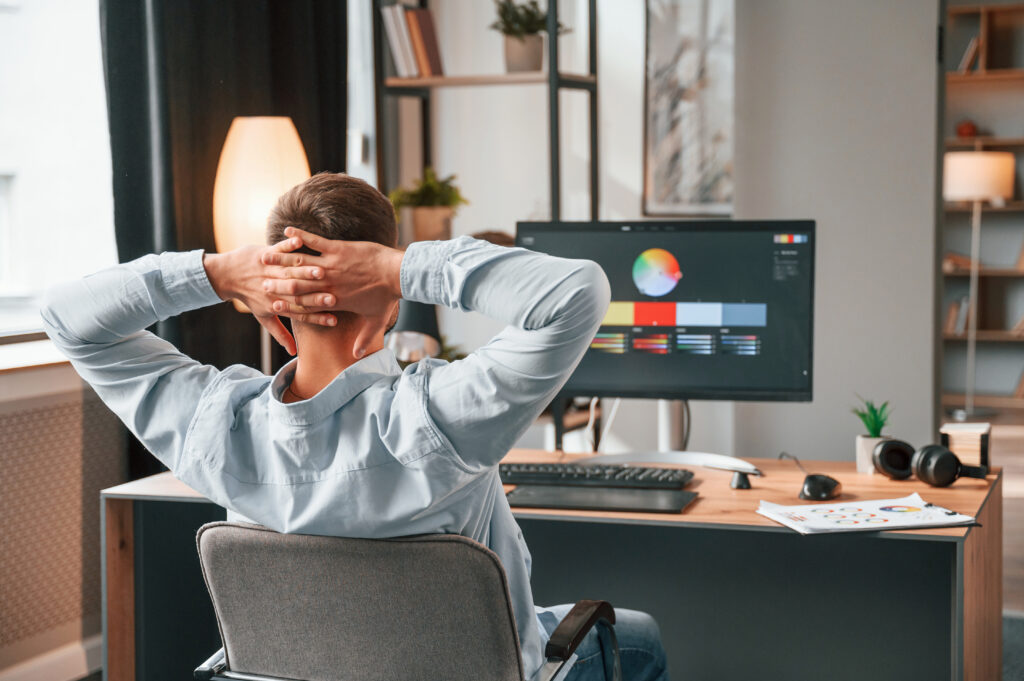From Pixels to Perfection: The Key to Choosing a Monitor for Accurate Color Editing
When it comes to creating stunning visual content, accurate color is key.
Whether you’re a professional photographer, graphic designer, or simply someone who loves to edit and enhance images, having the right monitor is crucial for achieving precise and vibrant colors.
With so many options available on the market, it can be overwhelming to choose the perfect monitor for your color editing needs. That’s why we’ve put together this guide to help you understand the key factors to consider when selecting a monitor for accurate color editing.
So let’s dive in and discover how to turn your pixels into perfection!
Exploring Different Types of Monitors: Which is Right for You?

When it comes to choosing the right monitor for accurate color editing, it’s important to understand the different types of monitors available and which one is right for you. There are several options to consider, including LCD, LED, OLED, and IPS monitors.
LCD (liquid crystal display) monitors are the most common type and offer good color accuracy and image quality. LED (light-emitting diode) monitors use LED backlighting to enhance brightness and energy efficiency. OLED (organic light-emitting diode) monitors provide deep blacks and vibrant colors, making them ideal for color-critical tasks. IPS (in-plane switching) monitors offer wide viewing angles and accurate color reproduction.
When choosing a monitor, consider factors such as screen size, resolution, and color gamut. A larger screen size and higher resolution can provide more detail and workspace, while a wider color gamut ensures accurate and vibrant colors. Additionally, consider factors like connectivity options and ergonomic features to enhance your editing experience.
Ultimately, the right monitor for you will depend on your specific needs, budget, and personal preferences. Take the time to research and compare different options to find the perfect monitor that will bring your color editing to the next level.
Key Features to Look For in a Monitor for Color Editing

When it comes to choosing the right monitor for accurate color editing, there are several key features to consider.
First and foremost, you’ll want to look for a monitor that offers excellent color accuracy. This means that the colors you see on the screen are a true representation of the original image. Look for monitors that have high color accuracy ratings, such as those that support a wide color gamut or have a high delta E value.
Another important feature to consider is the monitor’s resolution. A higher resolution will provide more detail and allow you to see your images in greater clarity. Look for monitors with at least a 4K resolution for the best results.
In addition to color accuracy and resolution, it’s also important to consider factors like screen size, connectivity options, and ergonomic features. A larger screen size can give you more workspace, while various connectivity options will allow you to connect to other devices easily. Ergonomic features, such as adjustable height and tilt, can also make a big difference in your overall comfort and productivity.
By considering these key features, you’ll be able to find a monitor that meets your color editing needs and helps you achieve stunning, accurate results every time.
Top Recommended Monitors for Accurate Color Editing

If you’re in the market for a monitor that will take your color editing to the next level, look no further. We’ve done the research and compiled a list of our top recommended monitors for accurate color editing.
These monitors have been carefully chosen based on their excellent color accuracy, high resolution, and additional features that will enhance your editing experience:
- Dell Ultrasharp U2719DX. This monitor offers outstanding color accuracy and a sharp 1440p resolution, making it perfect for professional photographers and graphic designers.
- LG 27UK850-W. With its 4K resolution and wide color gamut, this monitor delivers stunning visuals and accurate colors. It also offers USB-C connectivity for seamless device integration.
- BenQ PD2700U. This monitor is specifically designed for color-critical tasks with its 4K resolution, high color accuracy, and factory calibration. It also features a wide color gamut and an ergonomic design for added comfort.
- ASUS ProArt PA329Q. With its 4K resolution and wide color gamut, this monitor delivers exceptional color accuracy and detail. It also comes with professional-grade features like hardware calibration and multiple connectivity options.
- EIZO ColorEdge CG319X. This high-end monitor is perfect for professional color grading with its 4K resolution, wide color gamut, and built-in color calibration sensor. It offers outstanding color accuracy and is designed for precision editing.
With these top recommended monitors, you can trust that your color editing will be precise and vibrant. Whether you’re a professional or just passionate about creating stunning visuals, these monitors will elevate your work to new heights.
Calibrating Your Monitor for Perfect Color Accuracy

Calibrating your monitor is a crucial step in achieving perfect color accuracy for your editing work. While many monitors come pre-calibrated, it’s important to periodically calibrate your monitor to ensure consistent and accurate colors over time.
There are a few different methods you can use to calibrate your monitor. One option is to use a hardware calibration tool, such as a colorimeter or spectrophotometer, which measures the colors displayed on your monitor and adjusts them accordingly. These tools provide precise and accurate calibration, but they can be expensive.
Another option is to use calibration software, which utilizes built-in calibration tools on your computer. This method is more affordable but may not provide the same level of accuracy as hardware calibration.
Regardless of the method you choose, it’s important to follow the instructions provided by the calibration tool or software. This typically involves adjusting settings such as brightness, contrast, and color temperature. It’s also recommended to calibrate your monitor in a well-lit room and allow the monitor to warm up for at least 30 minutes before calibration.
By calibrating your monitor regularly, you can ensure that the colors you see on your screen are accurate and true to the original image. This will enhance your editing workflow and allow you to create stunning visuals with confidence. So take the time to calibrate your monitor and unlock the true potential of your color editing endeavors.
Ready to sell your property? Give us a call today and learn more about our professional photography services that can boost your property listing!
Plus, explore our virtual assistant coaching program to level up your business. Don’t forget to tune into our new podcast for even more valuable insights!
